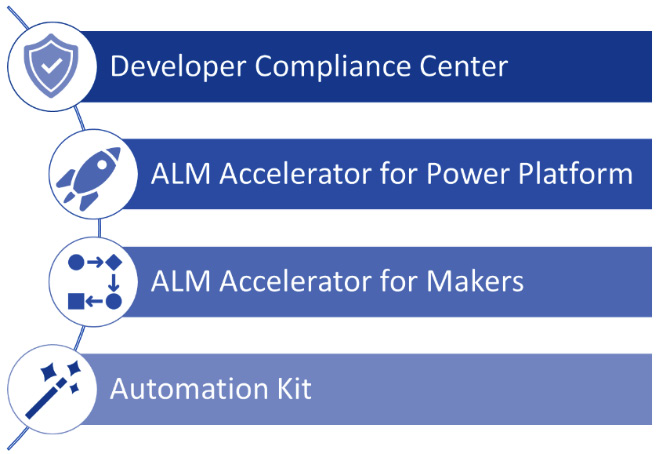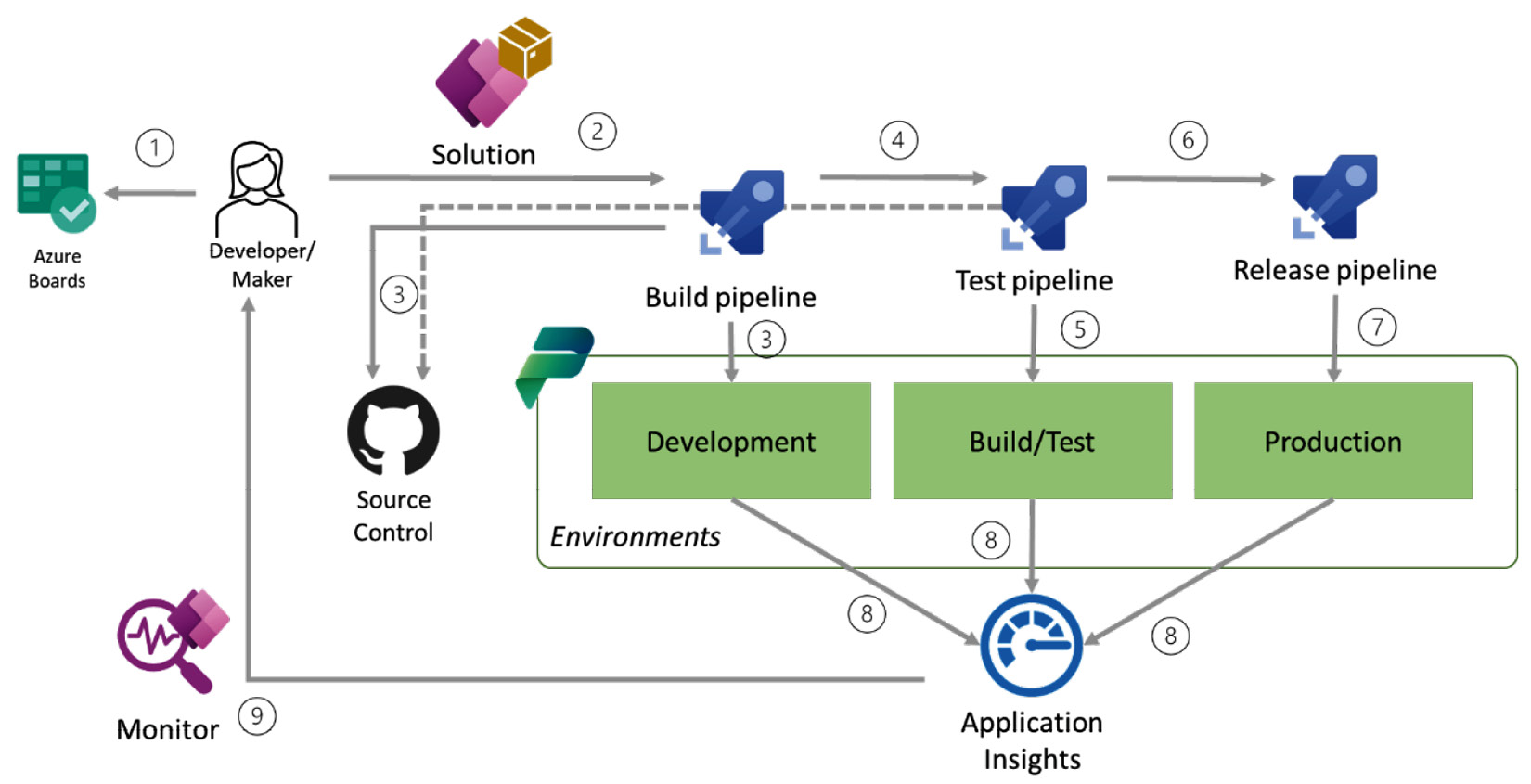The Customer Advisory Team (CAT) within Microsoft Power Platform engineering comprises solution architects whose primary objective is to aid customers in expediting the adoption of Power Platform. The next section will present two of the main outcomes of their latest work. By introducing the Maturity Model and the Center of Excellence accelerator, you will see important elements for the organization for adoption and testing activities.
Power Platform Maturity Model
Through working closely with some of the platform’s most accomplished users, the CAT team has discerned recurring patterns, practices, behaviors, and themes that enhance the progression of thriving organizations as they embark on a comprehensive digital transformation journey with Power Platform. This exercise was based on Capability Maturity Model Integration (CMMI). It is a framework for process improvement that provides organizations with a set of best practices and guidelines for managing and improving their processes. It is used to evaluate an organization’s current processes and to identify areas for improvement, and it covers a wide range of process areas, including project management, engineering, and service management. You can check team content on their YouTube channel: https://aka.ms/powercatlive.
The result of this work is the Power CAT Adoption Maturity Model, which defines five stages based on the maturity level of the organization. This won’t be a static view, but a journey where each organization will adopt new capabilities and processes, moving up to the adoption of the platform:
Figure 1.6 – CAT Adoption Maturity Model levels summary
As we can see, the first two levels (100 and 200) are both early stages in the adoption of Power Platform within an organization. Both stages may have a lack of consistent strategy and governance, with the use of Power Platform seen as out of control until administrative and governance controls are put in place.
Level 300 and beyond refer to the advanced stages of Power Platform adoption within an organization. At this stage, the focus is on standardization and achieving measurable success with Power Platform. The organization follows standardized processes for managing and monitoring Power Platform that are automated and well understood by makers. At Level 500, an organization has successfully demonstrated Power Platform’s ability to transform critical capabilities quickly and effectively.
These levels offer significant benefits for testing as they provide a well-defined, standardized, and automated process for testing, which ensures the quality of the developed apps and flows and also make it easy to validate the impact of the platform on the organization.
The CMMI presents a broader view from different points of view: strategy and vision, business value, admin and governance, supporting and nurturing citizen makers, automation, and fusion teams. In the next section, we will review the Center of Excellence toolkit, which is based on CMMI, along with tools that will be part of your testing strategy adoption.
We’ll look at this framework again in Chapter 4 as we will use it to plan a testing phase in Power Apps.
The Power Platform Center of Excellence toolkit
The Power Platform CoE toolkit is a set of tools and resources that organizations can use to establish a CoE for Power Platform, as part of the CMMI methodology. The goal of the CoE is to provide a centralized approach that covers all aspects, including governance, adoption, community engagement, development, operations, security, and data management. We have summarized and listed some for you to review:
- Governance, adoption, and community:
- Guidance and templates for establishing governance policies and procedures for Power Platform, such as user access and permissions, data management, and compliance
- Resources for promoting the adoption of Power Platform within an organization, such as training materials, user adoption plans, and best practices
- Resources for building and nurturing a community of Power Platform users, such as user groups, forums, and events
- Development life cycle, solution management:
- Guidance and templates for managing the development life cycle of Power Platform solutions, such as source control, continuous integration, and testing
- Tools for managing and maintaining solutions built on Power Platform, such as a solution checker, solution templates, and solution packages
- Operations, maintenance, and security:
- Tools and best practices for monitoring and troubleshooting Power Platform solutions, such as log analysis, performance monitoring, and incident management
- Guidance and best practices for securing Power Platform solutions, such as data encryption, access controls, and compliance
- Data management: Guidance and best practices for managing and protecting data used by Power Platform solutions, such as data backup, data retention, and data archiving
The toolkit is a great source of guidance overall, specifically for testing adoption. Figure 1.7 highlights four tools that can accelerate some of the activities mentioned previously:
Figure 1.7 – Tools from the Power Platform CoE toolkit
From top to bottom, you can verify compliance with your app, automate publishing solutions between environments, manage version control and deployment, or implement an automation platform while following industry best practices. Check out the toolkit to learn more.
The Expense Report app
We have talked about a fictitious app throughout this chapter. You can download and build the app for yourself at https://learn.microsoft.com/en-us/power-apps/maker/canvas-apps/expense-report-install. How will you use the different components, tools, and processes with this app? Based on the CI/CD example from https://learn.microsoft.com/en-us/azure/architecture/solution-ideas/articles/azure-devops-continuous-integration-for-power-platform, we will look at the app, as shown in Figure 1.8, so that you can use it as a personal project while reviewing the different elements. In this example, looking into the CMMI model, the organization would be at Level 300: Defined, where there is an environment strategy and ALM is facilitated:
Figure 1.8 – CI/CD architecture for Microsoft Power Platform
Let’s look at the steps involved in more detail:
- In the planning phase, requirements from users are created in Azure DevOps Boards as a way to track the functionality developed.
- The solution for the app is updated as part of the CI/CD process. This triggers the build pipeline.
- Continuous integration exports the solution from the development environment and commits files to source control. This allows us to track the source code that’s deployed in each environment. Test cases will also be stored in the source control repository.
- Continuous integration builds a managed solution, runs tests, and creates a build artifact.
- You deploy to your build/test environment. Tests created with Test Studio are executed using Test Engine or the PAC CLI.
- Continuous deployment runs tests and orchestrates the deployment of the managed solution to the target environments.
- You deploy to the production environment, making the app available to the final users.
- Application Insights collects and analyzes health, performance, and usage data.
- You review the health, performance, and usage information. You could use a monitoring tool to check performance and app behavior as well.
This brings us to the end of this chapter.



 Free Chapter
Free Chapter



